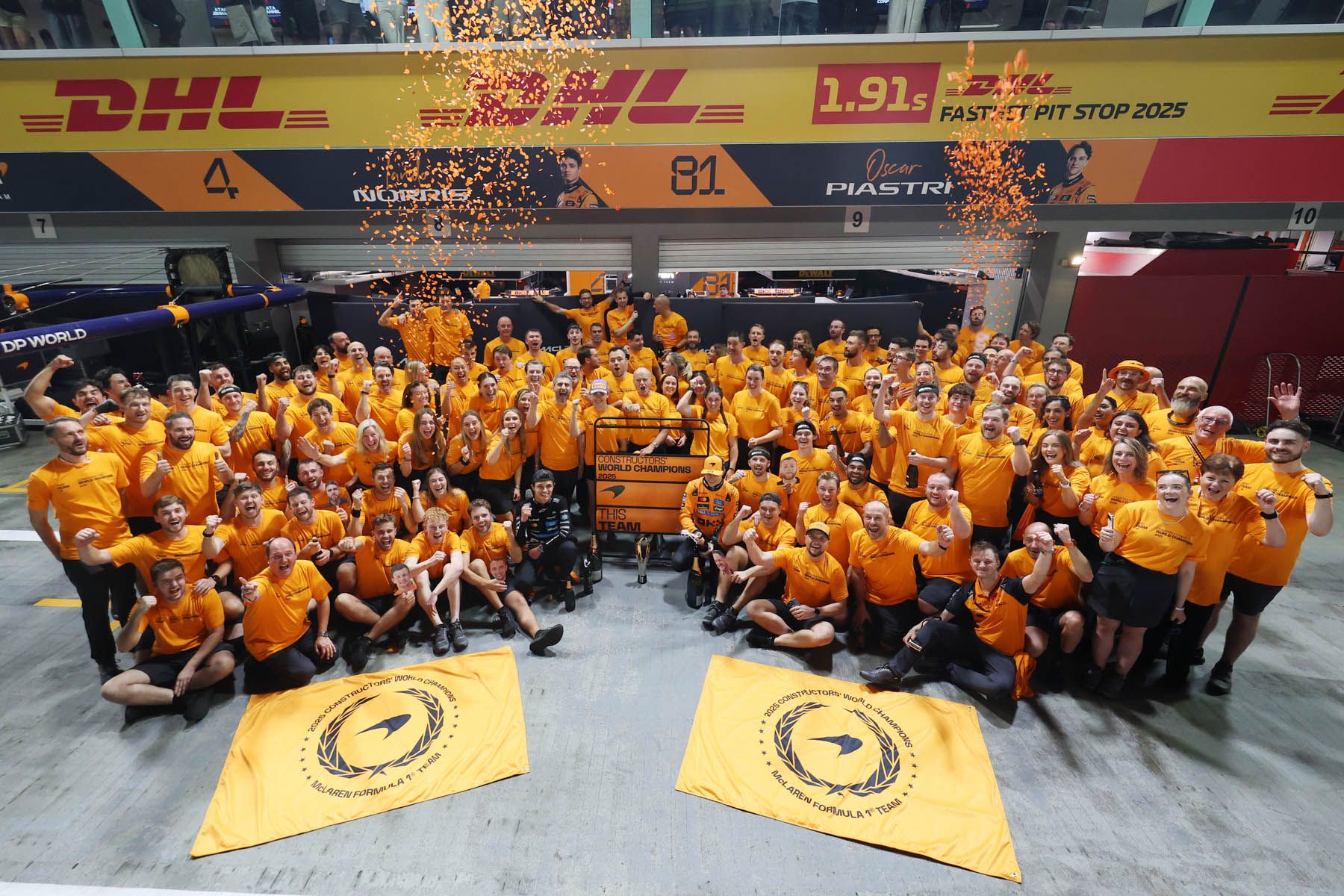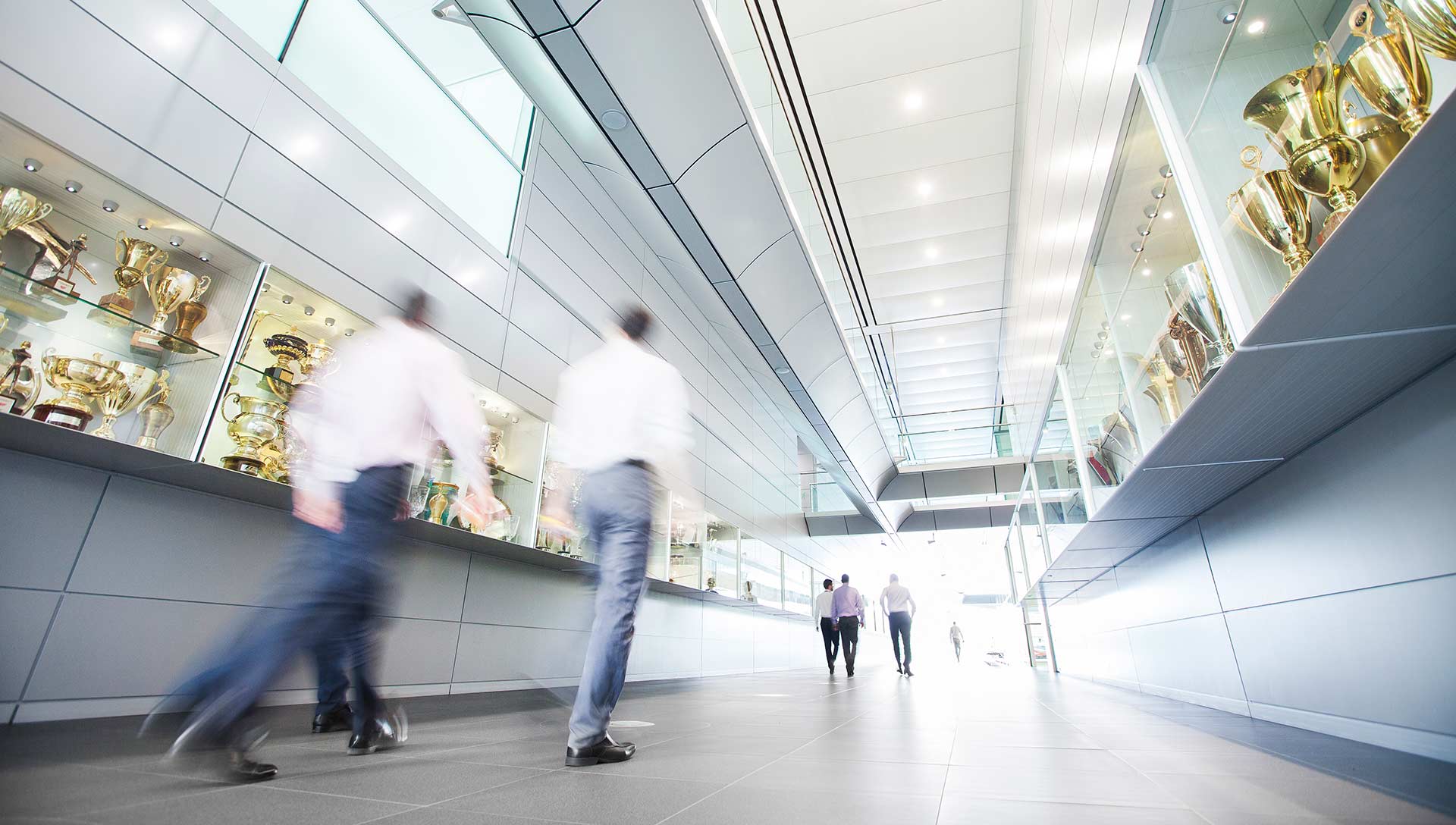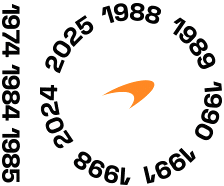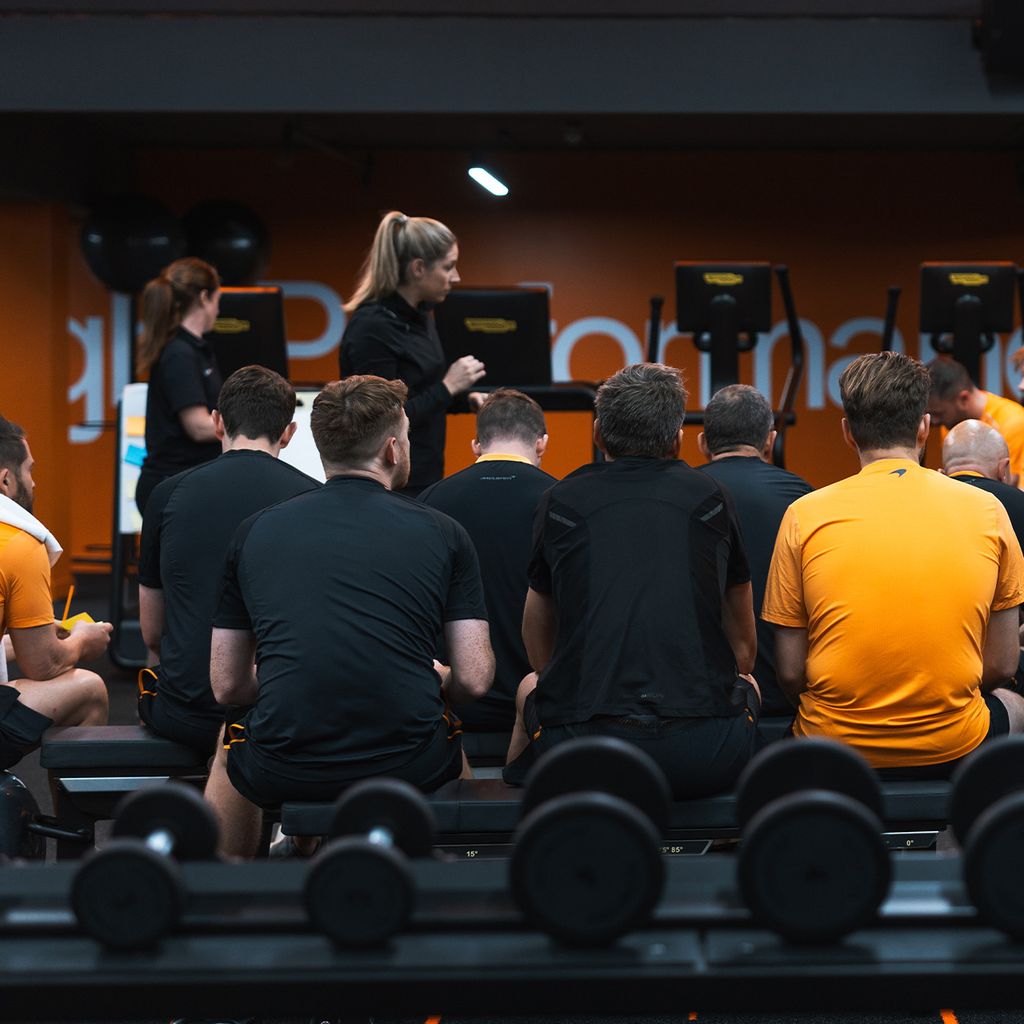
How to train like the McLAREN Formula 1 Team – presented by Technogym
Fatigue is an ever-present risk during a modern F1 season, so how do we prepare our trackside team to deliver their best work all season long?
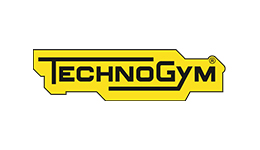
Read time: 11.4 minutes
Formula 1 is a physically demanding sport, and whenever that’s mentioned, the image it usually conjures is that of exhausted drivers clambering out of the car, or sweating in the gym. It certainly is tough on the drivers, but it’s tough on everyone else too, and because this is a team sport, the fitness of the entire team is something we take very seriously.
This is why the new Optimum Nutrition McLaren Performance Hub (ON MPH) at the McLaren Technology Centre is regarded as a significant step forward, designed to enhance performance.
It wasn’t always this way. While the science of marginal gains has a strong presence in F1, until recently, it’s been confined to technology, rather than people.
But Formula 1 is overwhelmingly a human-scale sport, and success comes from having people in peak condition, not just for the physical demands of the job but also because of the impact that has on mental faculties. The competition is fierce, and so minimising mistakes, which are inevitable, can become a key performance differential.
The modern, 24-race calendar (plus testing) demands a lot from teams: it’s crammed with double- and triple-headers, often in very hot, sometimes very humid, climates. Days off that don’t involve travel at 37,000 feet are rare. Fatigue is inevitable, and yet, errors have become exceptionally rare.
With the help of Technogym, we’ll explain how we prepare our people for an F1 season, ensuring they’re healthy, happy, and ready to perform at their best.
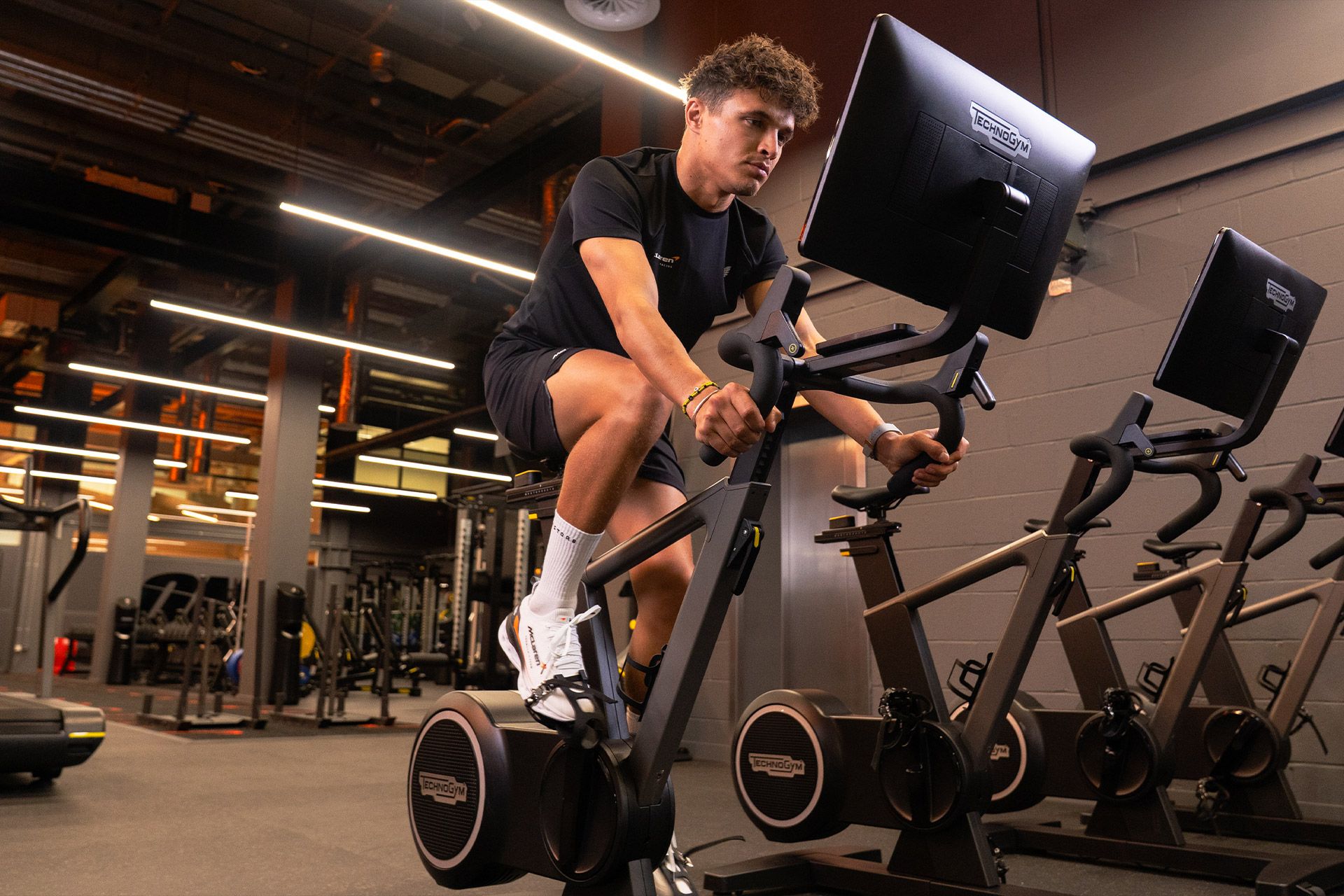
Evolving human performance
There isn’t a definitive catalyst for the increasing importance of human performance and preparation, but there’s certainly a link between the greater focus on physical and mental fitness and the expansion of the calendar over the last decade, even if it isn’t a direct domino effect. A lot has happened in a short period of time.
In addition to being Oscar Piastri’s Race Engineer, Tom Stallard is our Director of Human Performance - a job that didn’t exist a decade ago. “It’s an interesting topic,” says Tom. “When I took on this role, at the end of the 2019 season, the human performance support for the race team consisted of access to a single doctor, shared by all of the teams in the F1 paddock.
“At that same point, we also took on a strength and conditioning coach, who travelled to all the races to support the team – effectively a team personal trainer – and we built from there. Today, we have a full complement of personnel, as well as all the kit we need and the new ON MPH. We’ve come quite a long way in five years.”
Investment in equipment, investment in staff
Once the decision was made to invest in human performance, the team didn’t employ half measures. The ON MPH has been fitted with the latest Technogym equipment, including their state-of-the-art Biostrength REV system, while the staff roster includes hugely talented people in medicine, strength and conditioning, nutrition, and psychology.
“We're trying to reduce fatigue across the team,” says Emer Acton, Head of Human Performance and Physiotherapy. “We know fatigue is our greatest enemy as we travel across multiple times zones. Fatigue is linked to injury, illness, errors, and reduced cognitive function, all of which plays a huge part in performance.
“By increasing someone's physical fitness, and by improving their immunity through good sleep, good recovery, diet, and nutrition, we reduce the risk of exposure to injury and illness. That has a knock-on effect: we reduce errors, whether those be cognitive or physical.”
There is a strong sporting pedigree across our Human Performance team, who have worked with a wide range of athletes, from the British Olympic team - Tom is a World Champion and Olympian rower himself - to the Premier League and World Cup football, rugby, and the top levels of swimming.
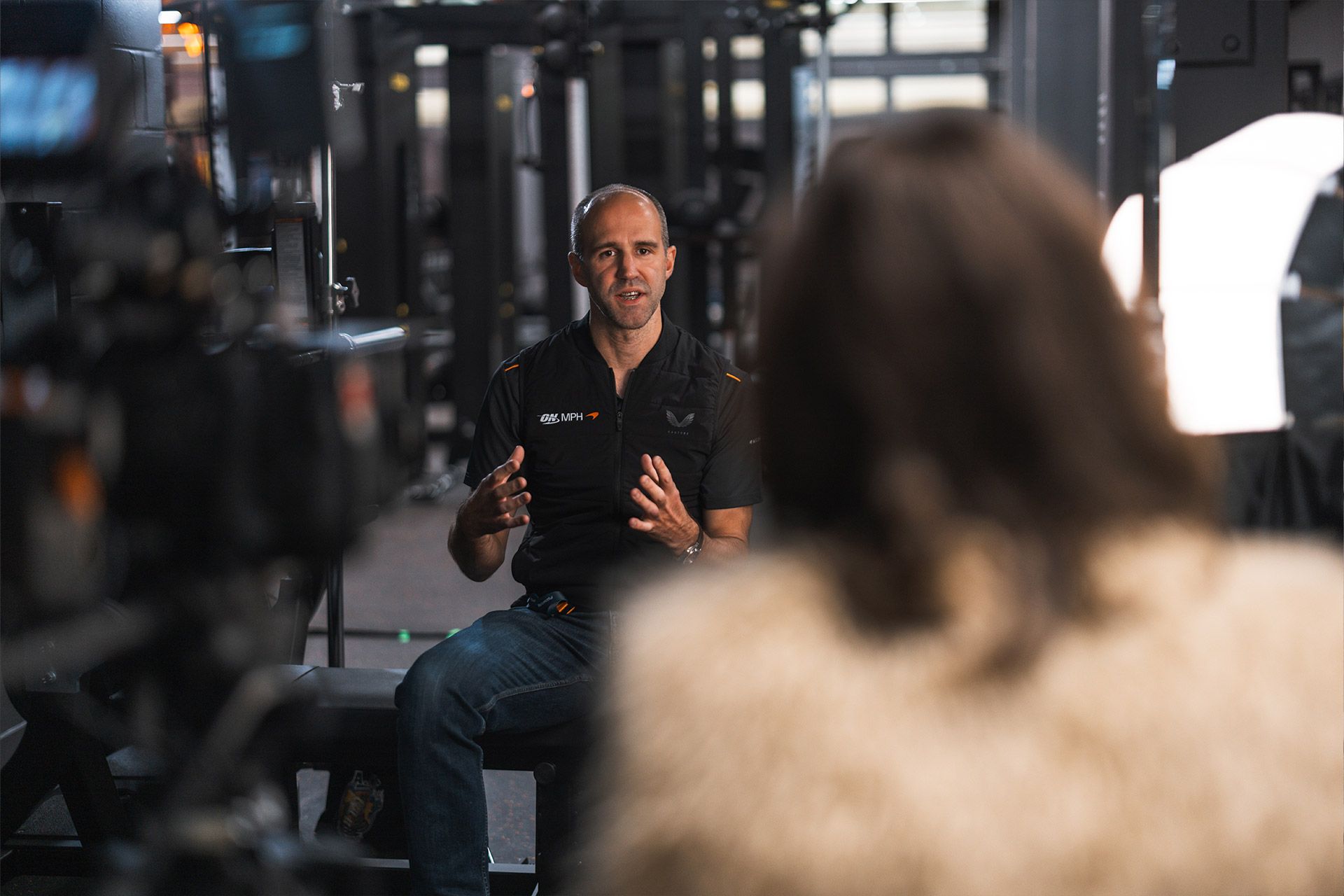
Pre-season
One of the oddities of the modern F1 regime is that fitness work tends to be front-loaded. It’s a question of workload: there isn’t really sufficient time to get into shape once the cars hit the track, and barely enough to maintain fitness levels: it’s during the (northern) winter that the heavy lifting – both metaphorical and literal – tends to be done.
“It’s mandated in pre-season that the pit-crew, for example, will come into the ON MPH,” says Emer. “We’ll have the entire pit crew in there taking part in specifically curated group physical training sessions, which are tailored to achieve the strength requirements for a season of performing pit stops.”
“This is how it’s done in an elite sports team: pre-season is when you build core fitness, then throughout the year, it’s more about doing the minimum dose required to stay at that level. When you’re competing, you can’t overload with extra training.”
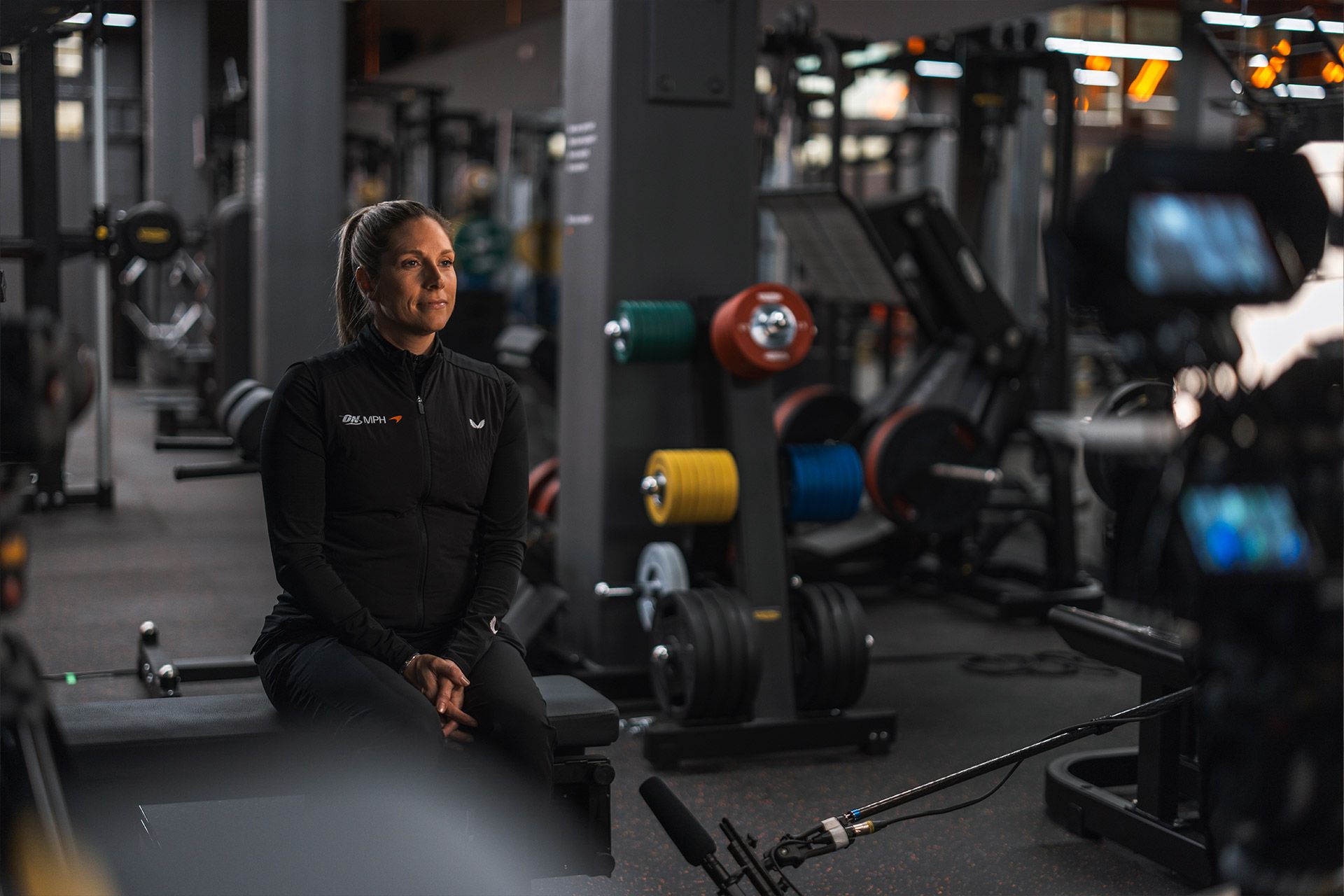
The ON MPH
The winter training programme, conducted under the aegis of the S&C coaching staff, is a one-size-fits-all regime – but once the season gets underway, the garage crew move onto individually tailored programmes. This is where the Technogym equipment at the ON MPH is able to elevate the team’s human performance regime to a higher level.
When the McLaren Technology Centre opened 20 years ago, its then gym was a useful novelty. A fitness regime was viewed more as a useful lifestyle choice than a performance criterion. The ON MPH, however, has been a game-changer, much larger in size and filled with fit-for-purpose equipment, including Technogym’s revolutionary Biostrength REV range.
These allow the team to collect very precise data from each member of the crew, which can be used to measure strength training, track progress, and maximise effectiveness. Each member of the team also has access to the Technogym App, where they can view this data and continue to make progress, whether they’re training at the ON MPH, at home, in their hotel room, or outdoors.
McLaren Racing’s maxim has always been that anything you can measure, you can improve. And having built up a baseline for each member of the garage crew on this equipment in the ON MPH – measuring everything from the team’s overall output to the relative strengths of each limb - a tailored programme can then guide them through the rest of the season.
“We assess the crew in December to see where they’re at and based on that, I send them away with a low-dose programme to do over Christmas,” says Emer. “This allows them to survive a five-week pre-season programme when they come back. It’s a good dose!”
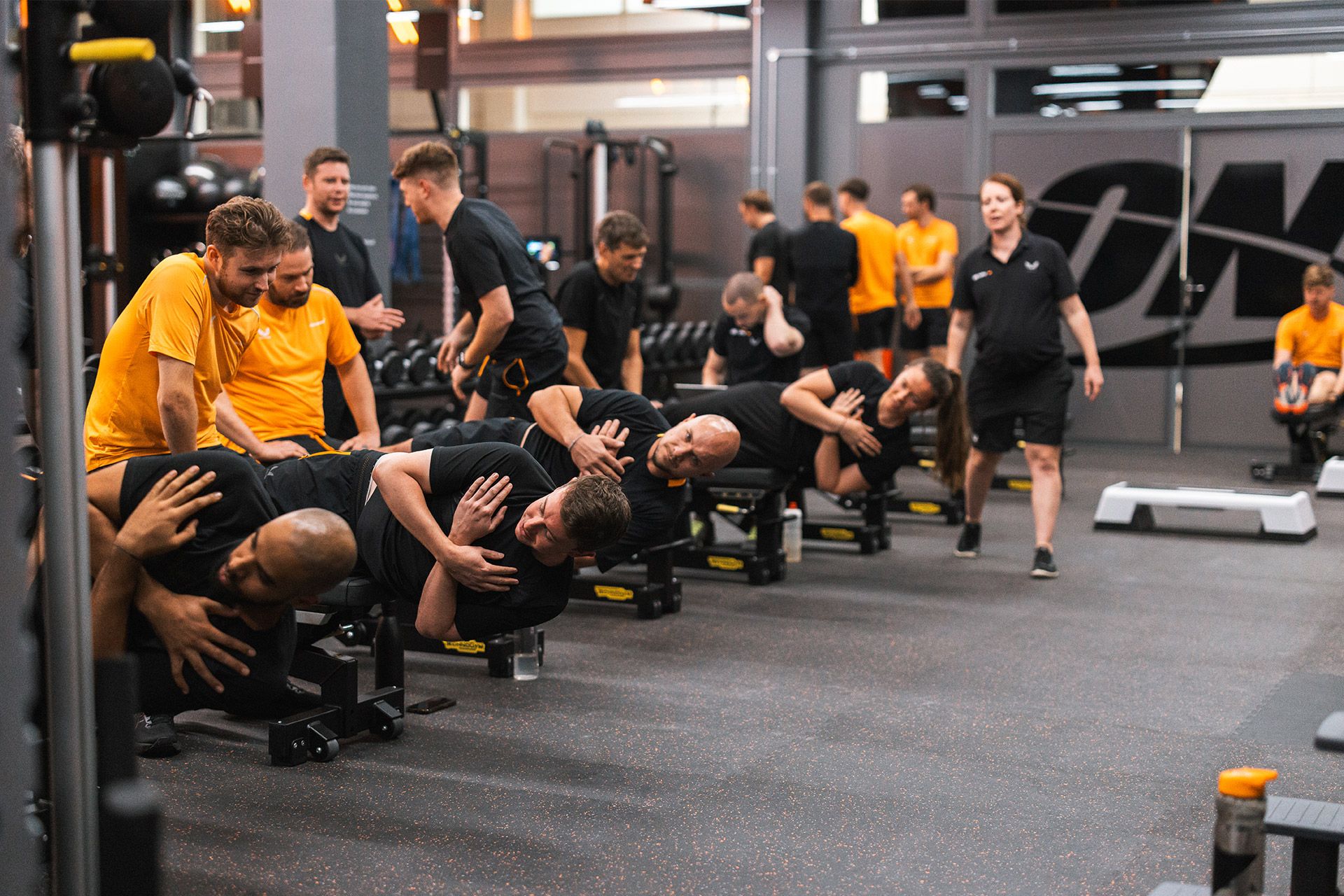
In season
As everyone using their running machine as a clothes horse knows, the key to long-term fitness is sticking with the regime. Armed with data captured in the ON MPH across the pre-season, when the team go out onto the road, each has a personalised training programme to follow on the Technogym App, which tracks their progress.
It’s not a straightforward task, because, of course, the trackside team will be deprived of access to the ON MPH when they’re racing, testing, and on summer shutdown. It’s a challenge that requires a degree of… creative thinking.
“We’ve mapped every hotel we stay in across the year to understand what the gyms are like and what equipment is available,” confirms Emer. “That’s all fed back to our S&C coach, who builds programmes accordingly.
“We go down to a very granular level. If the team are staying in a hotel with a great gym, there’s a programme for that, but equally, if we don’t have that luxury, then we will have programmes based around what someone can do in a tiny space in a room. For example, isometric body weight exercises, which might simply be holding a pose – you don’t have to be lifting 30kg weights.”
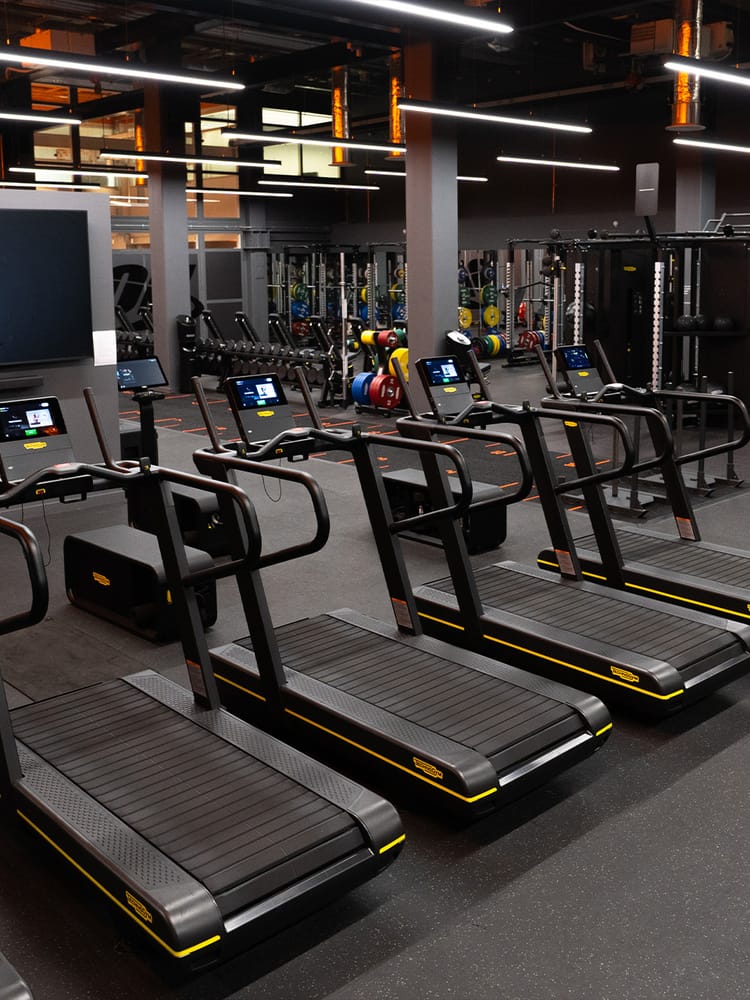
Technogym x McLAREN Racing
The philosophy of bad apples
You may think that the very last thing the team wants to do after a day of high-tempo physical work in a hot, sweaty garage, is take a run or do circuit training. But after a long day, it can actually be enjoyable downtime and key to relaxing, reducing fatigue and promoting a higher level of performance, while making the team more cohesive.
“No one is more grumpy that someone who’s tired,” says Tom. “In a group with two or three people that are tired, it’s quite easy for them to bring down the whole group. They’re not bad apples, they’re just knackered! It makes them unreceptive to ideas, their minds wander, and they miss things. That can slow down and pollute a group of otherwise positive, intelligent, and focused people.
“The more we can manage this, the better things go. Our programme now is aimed at reducing fatigue but also building resilience. It’s a long season, and inevitably, there will be fatigue – but approaching it this way allows us to reduce it where we can and mitigate where we can’t. Thus, we’ll have a healthier team delivering higher performance.”
Related Articles
Latest News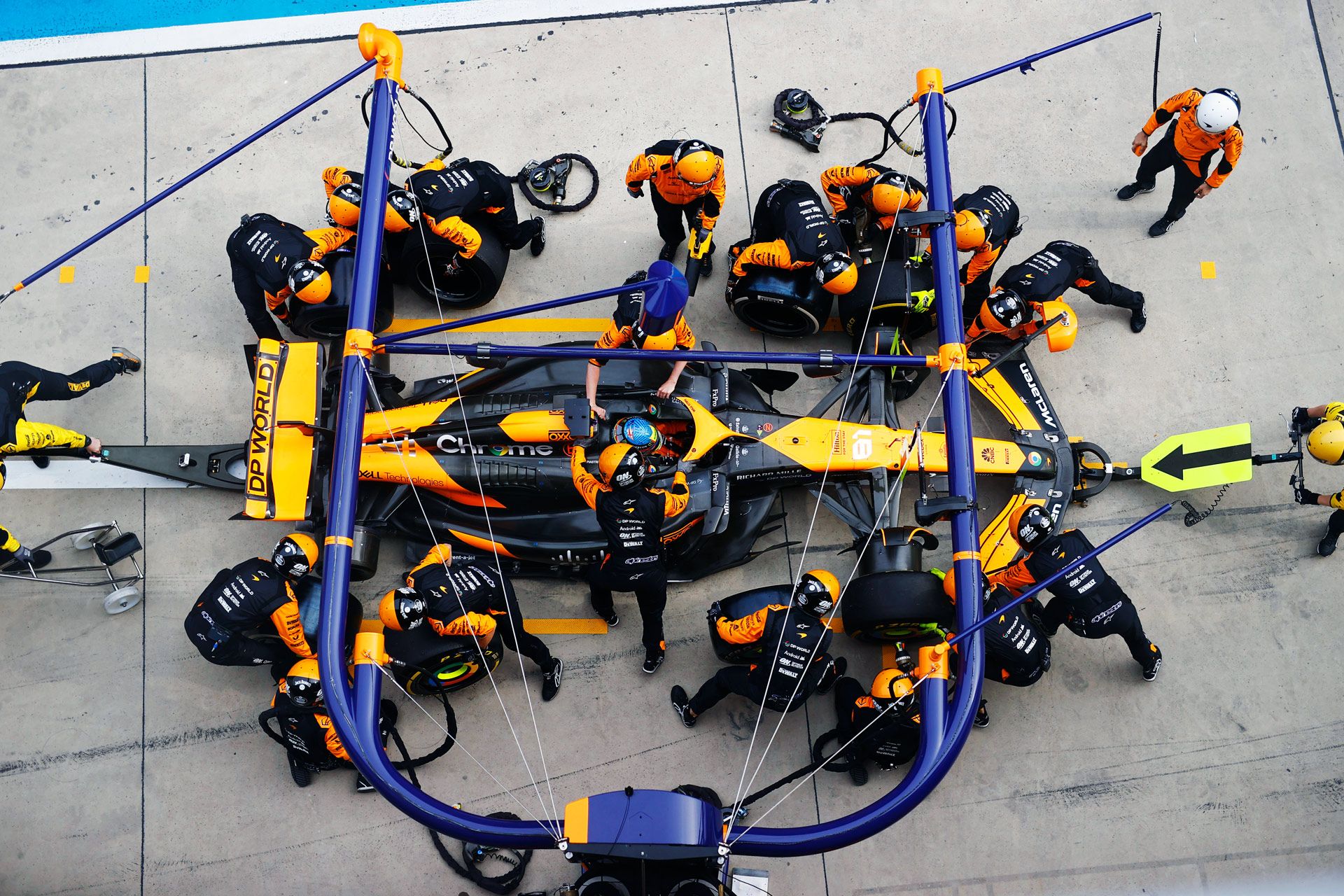
Rotation, role selection, and plenty of practice: Behind the scenes of a well-executed pit stop
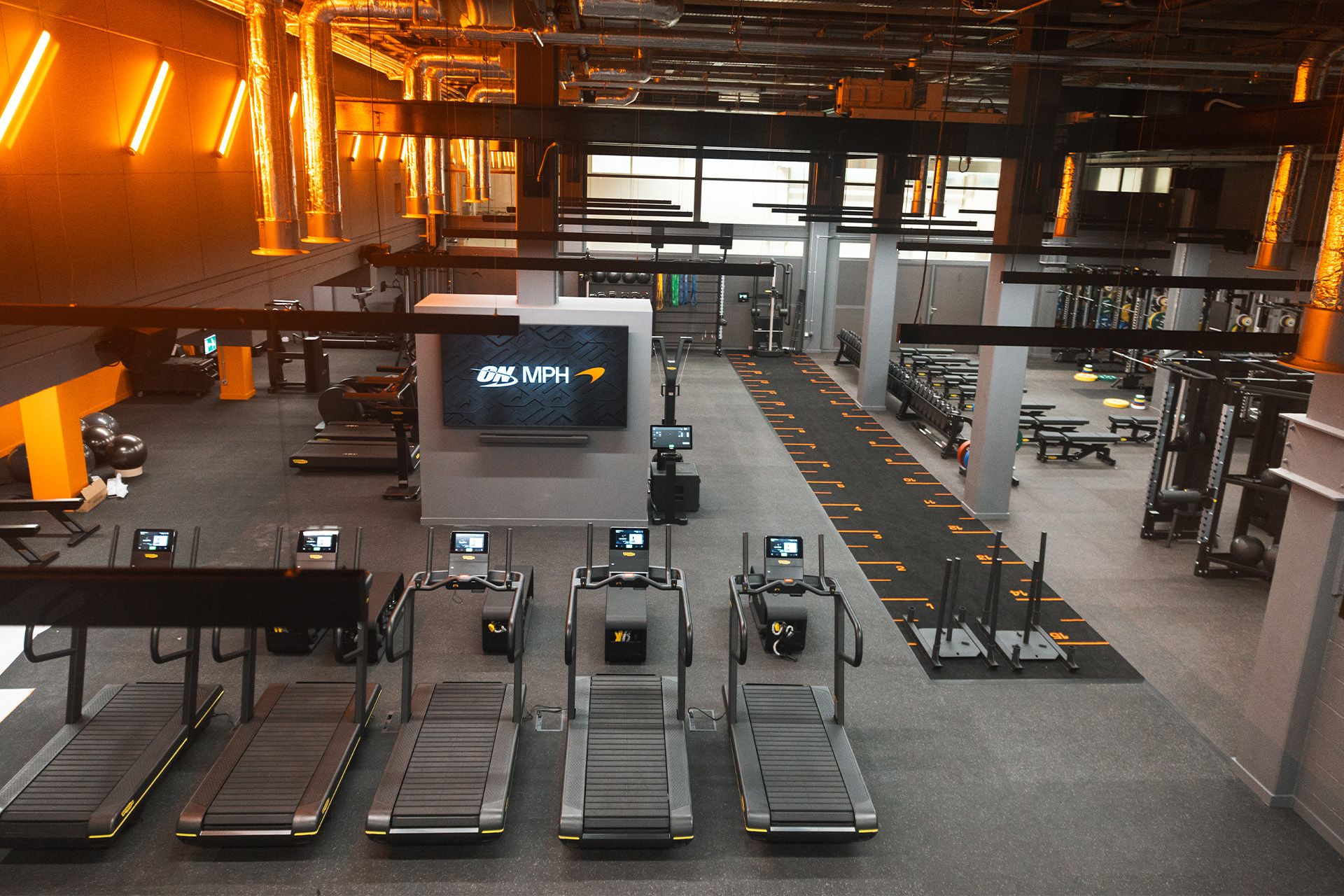
McLaren Racing unveils state-of-the-art Optimum Nutrition McLaren Performance Hub
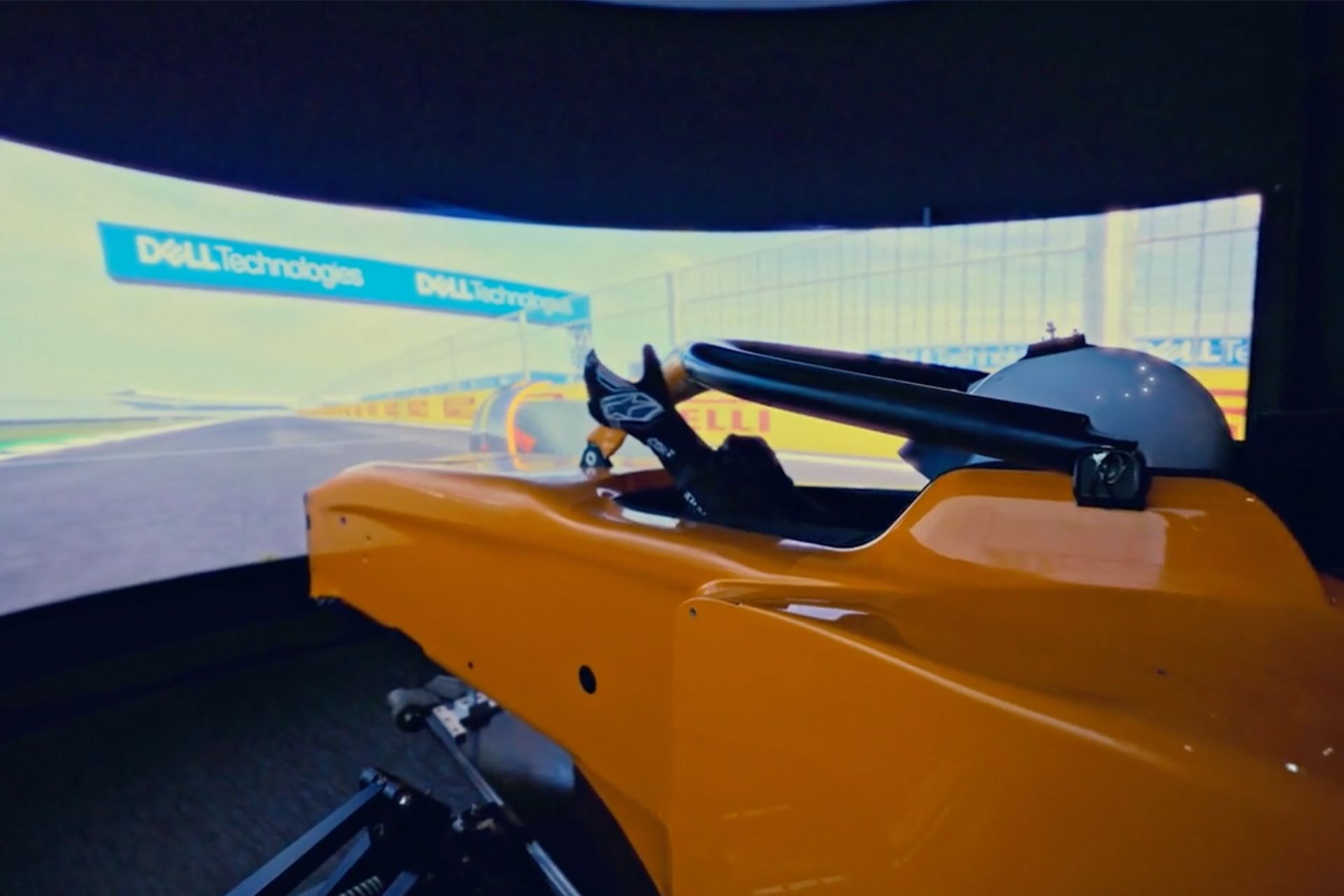
A day in the life of a McLaren F1 Team Test and Simulator Driver

A day in the life of an F1 Trackside Reliability Engineer
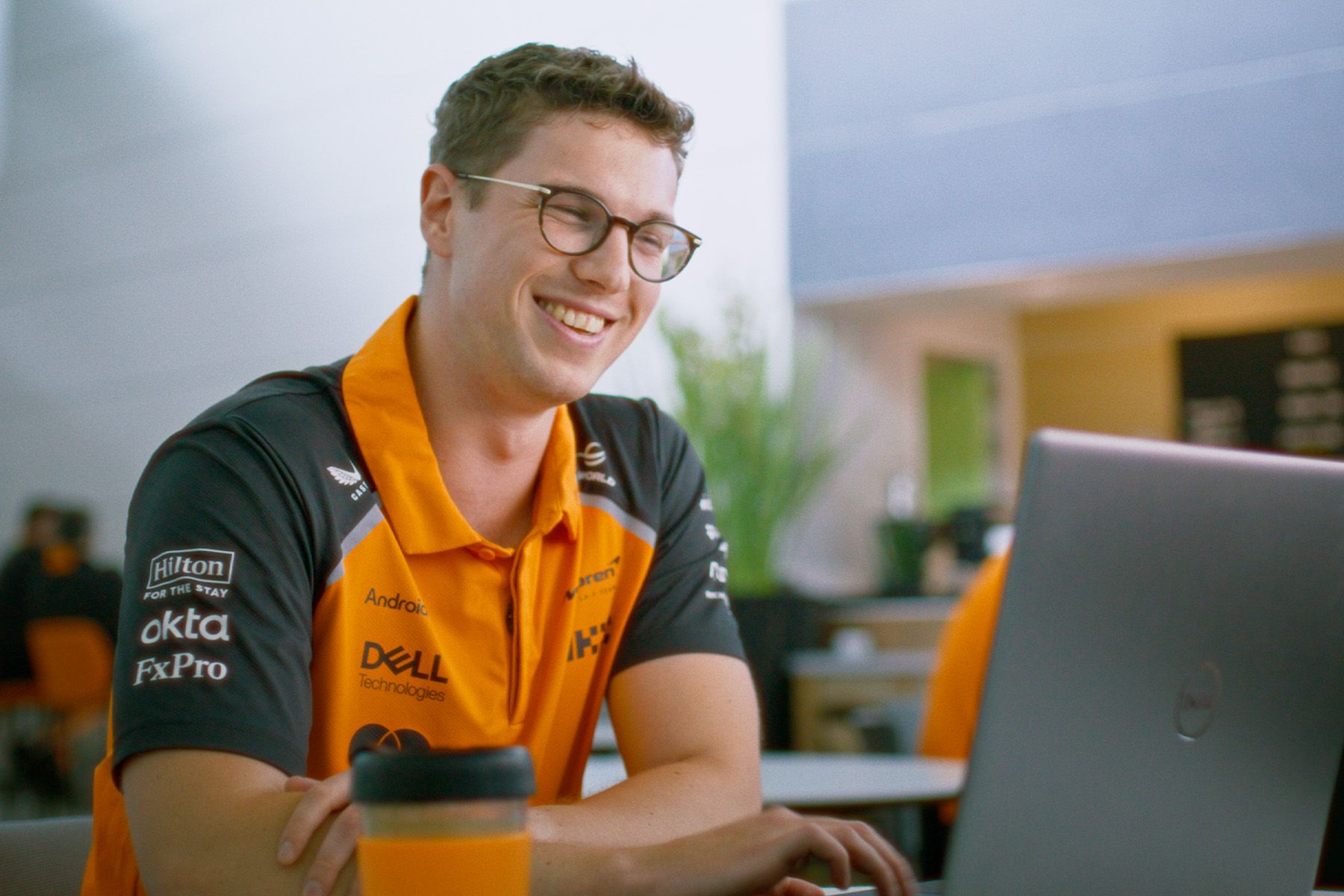
A day in the life of an F1 Data Scientist
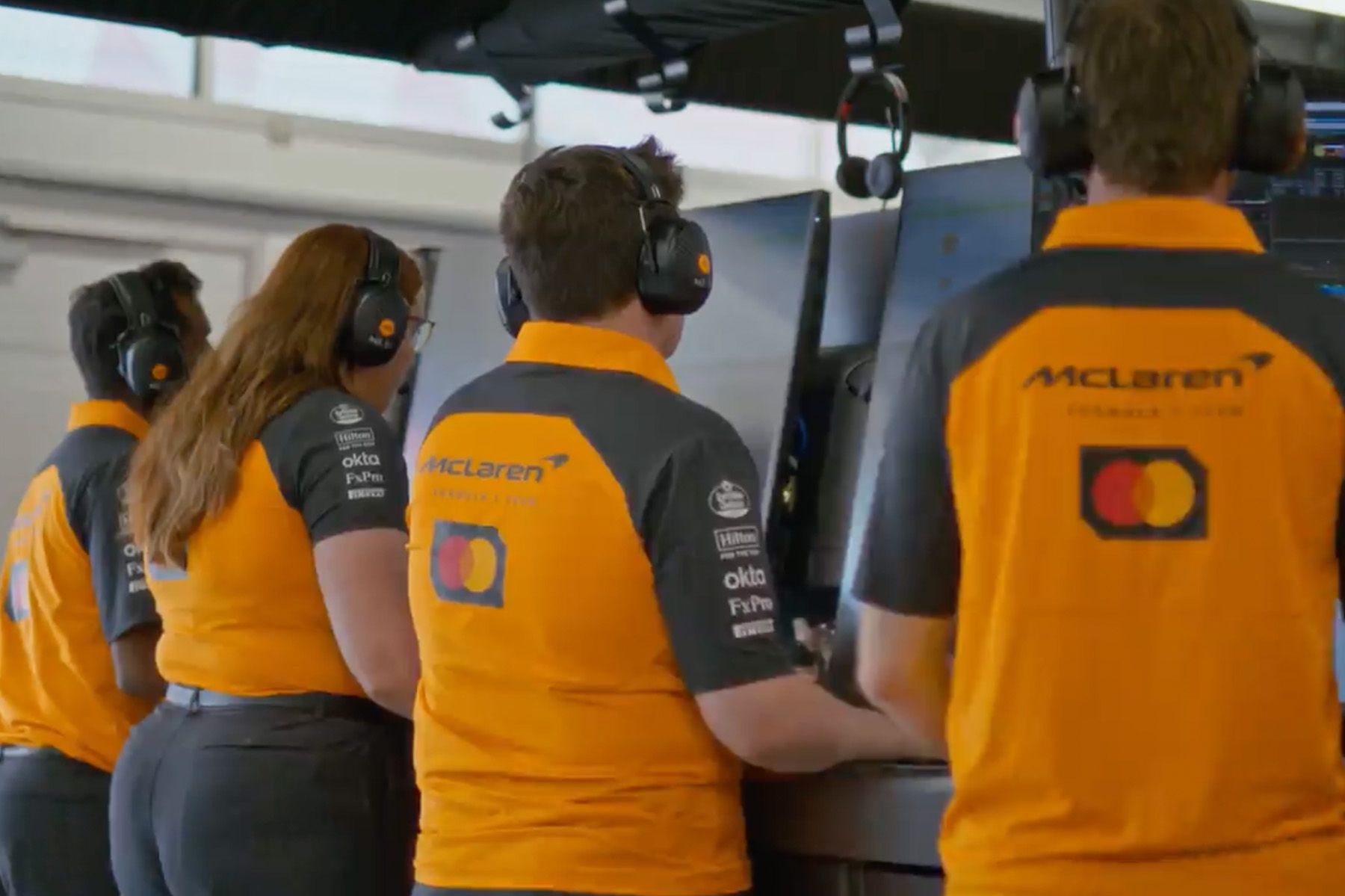
A day in the life of an F1 Team IT Operations Engineer
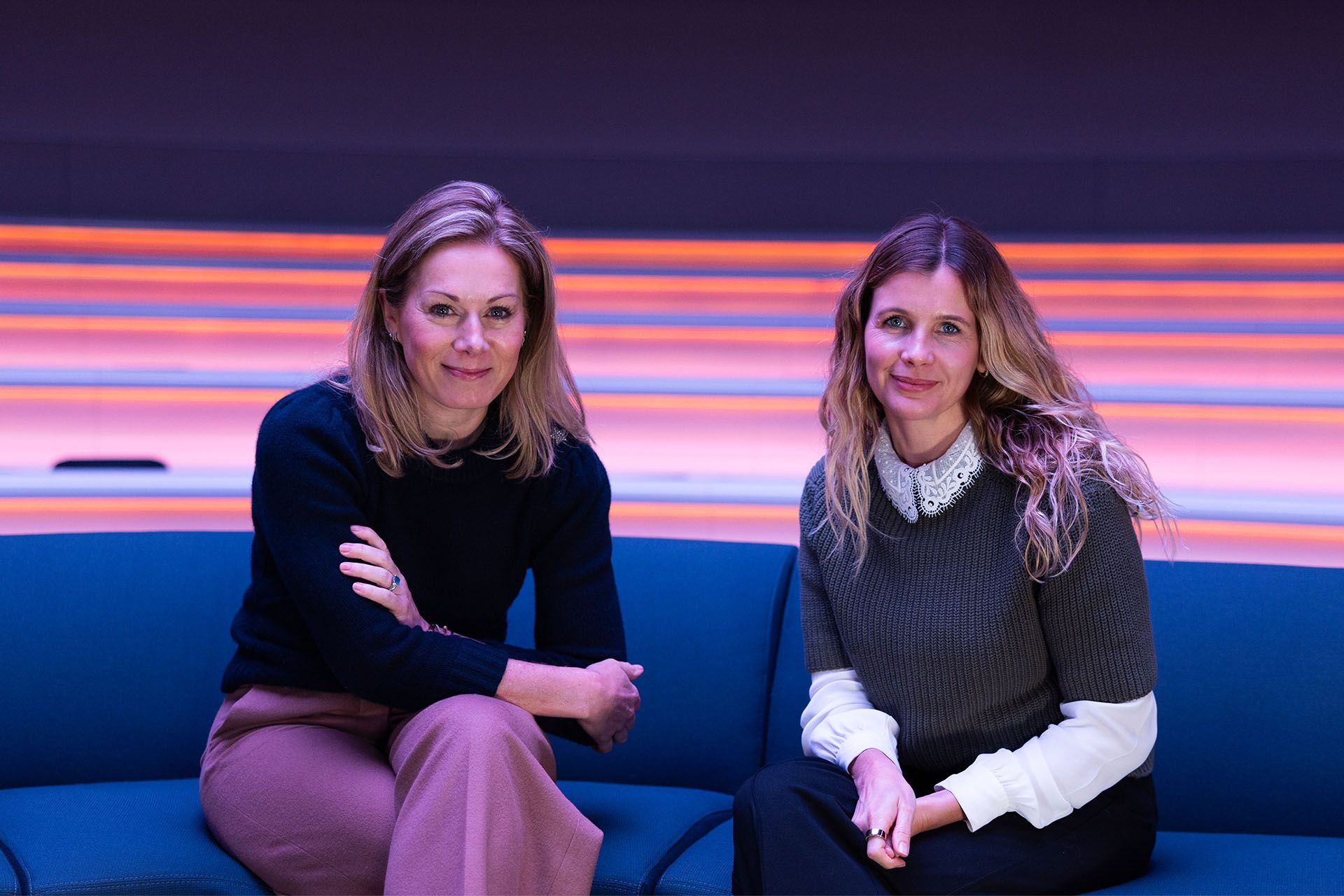
Breaking down barriers and shaping the future: Louise McEwen and Stephanie Carlin on empowering women in motorsport
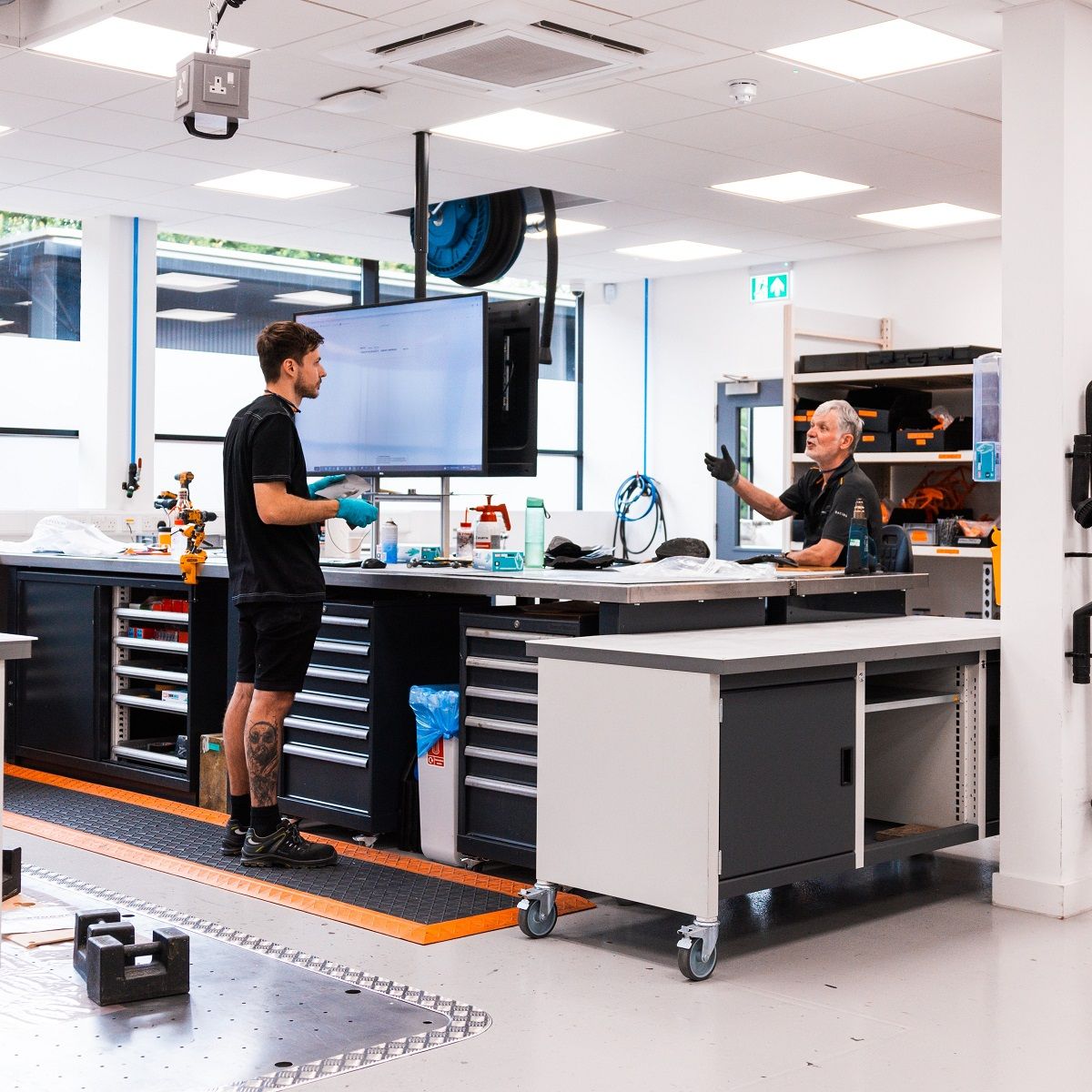
How the new McLaren Racing Composite factory elevated our team culture
